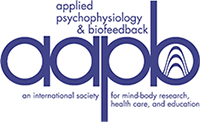Live Z-Score Neurofeedback
Live Z-Score training (LZT) neurofeedback is described. Its theoretical underpinnings, technical foundations, and relationship to brain operant learning are described. LZT is an outgrowth of both neurofeedback and quantitative electroencephalography (QEEG) and is consistent with previous QEEG-based neurofeedback methods. In addition, it incorporates elements of self-regulation that allow the client's brain to become part of the decision-making process, providing an important aspect of individualized treatment. LZT encourages flexibility and appropriateness of brain activation and connectivity and is adaptable to a wide range of clients and training needs.

Showing average (colored bars) and instantaneous (lines with “caps”) Z-Scores on 19 surface channels. This format depicts absolute power and the range of variation of the electroencephalography at each site. This shows that the most deviant sites also have the least instantaneous variation and that the more normative sites exhibit the most variation. For color versions of figures, see http://www.brainm.com/software/zscoreimages.

Trend graph of 248 Z-Scores during a typical session. The migration of Z-Scores toward z = 0 is clearly evident, especially in the range of 10 to 18 minutes. For color versions of figures, see http://www.brainm.com/software/zscoreimages.

Trend graph of raw power values during the Live Z-Score session of Figure 2. The reduction in Delta and Theta, and Alpha, and the increase in Beta are clearly evident. For color versions of figures, see http://www.brainm.com/software/zscoreimages.

A state-of-the-art training screen showing simultaneous live standardized low-resolution brain electromagnetic tomography voxel brain activation, with surface maps, a trend graph of the training result, and bar graphs for display and control of training parameters. For color versions of figures, see http://www.brainm.com/software/zscoreimages.

Thomas F: Collura
Contributor Notes
